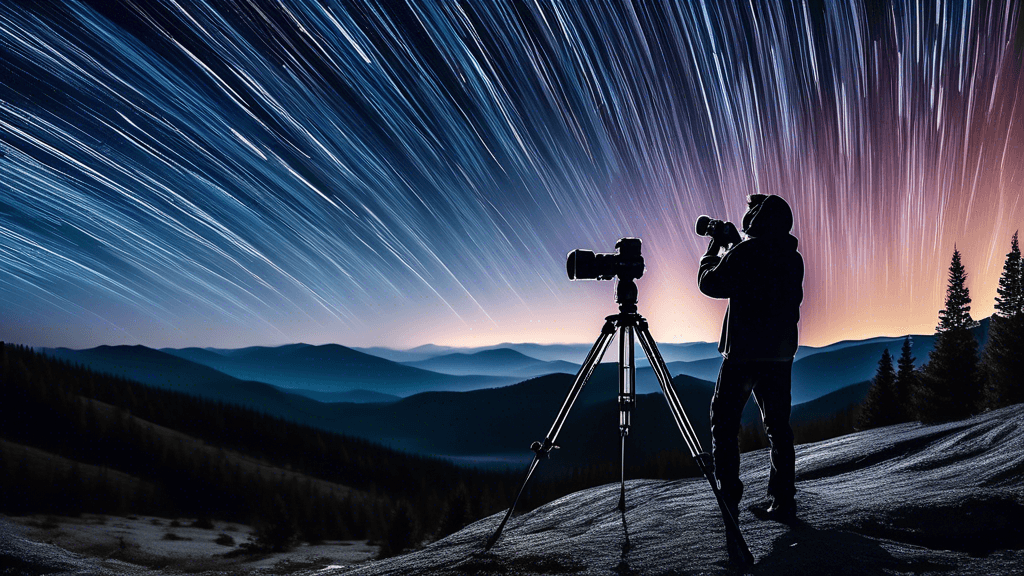
Capturing the Cosmos: A Guide to Photographing Star Trails and the Galactic Core
Share
An Introduction to Astrophotography: Star Trails and the Galactic Core
Have you ever gazed up at the night sky and wished you could capture its mysterious and fleeting beauty? Astrophotography offers an accessible way to bring the awe-inspiring aspects of the cosmos into your home. This guide focuses on two particular jewels of the night sky: star trails and the galactic core, providing insights into photography techniques that can turn the night sky into a breathtaking part of your photography portfolio.
Understanding Your Subjects: What are Star Trails and the Galactic Core?
Star Trails are a type of photograph that uses long exposure times to capture the apparent motion of stars in the sky caused by the Earth's rotation. This effect creates sweeping arcs of light that can vary in color and intensity, depending on the stars' temperature and atmospheric conditions.
The Galactic Core, often a centerpiece in astrophotography, refers to the dense, bright region at the center of our spiral galaxy, the Milky Way. Rich in interstellar clouds and star clusters, it offers a dynamic and complex subject sure to captivate any viewer.
Technical Requirements for Photographing Star Trails and the Galactic Core
Photographing these celestial phenomena requires specific gear and settings:
- Camera: A DSLR or mirrorless camera capable of manual mode is essential.
- Lens: A wide-angle lens with a large aperture (f/2.8 or wider) is preferable for capturing expansive sky views and allowing enough light for clear, detailed shots.
- Stable Tripod: Stability is key in long exposure photography to avoid unwanted blur.
- Remote shutter release: To further minimize camera shake and maintain sharpness.
- Extra Batteries: Long exposures and cold nights can drain camera batteries quickly.
Techniques for Capturing Star Trails
Creating captivating star trail images involves understanding exposure and composition:
- Location and Timing: Choose a dark site away from city lights during a new moon phase. This will maximize the visibility of stars against the night sky.
- Camera Settings: Use a low ISO to reduce noise, a wide aperture to absorb more light, and a long exposure time (or multiple exposures merged in post-processing) to achieve vivid trails.
- Composition: Incorporate elements of the landscape to frame or anchor your star trails, adding depth and context to the celestial movements.
The best star trails engage not just with the cosmos but with the Earth. They remind us of our own rotating position within the vast universe, shares Jane Doe, a renowned astrophotographer.
Techniques for Photographing the Galactic Core
The Galactic Core, less subject to the Earth's rotation, can be photographed with slightly different settings:
- Timing and Position: In the Northern Hemisphere, the galactic core is best viewed from April to July. Position yourself with a clear, southern view.
- Camera Settings: A higher ISO might be necessary due to the core's faintness. Strive for a balance between ISO and exposure time to capture details without excessive noise.
- Focusing: Autofocus can falter in low light. Use manual focus if necessary, aiming to lock in on a bright star or the moon.
Post-Processing Tips
Both types of astrophotography benefit from thoughtful post-processing. Adjusting contrast, clarity, and color balance can help enhance the night sky's natural beauty. Software like Adobe Lightroom or Photoshop offers advanced tools for merging images, reducing noise, and increasing the dynamic range.
The Ethical and Environmental Considerations
As astrophotographers, it is crucial to practice responsibility towards the environment. Limiting light pollution not only preserves our ability to enjoy the night sky but also protects wildlife that relies on the darkness. Share your photographs accompanied by messages of conservation, and advocate for dark sky practices in your community.
Conclusion: Sharing Your Cosmic Captures
Photography allows us to preserve the fleeting moments of beauty that the night sky offers. Whether showcasing the rhythmic dance of star trails or the intricate details of the galactic core, each image tells a story of cosmic proportions. As you explore the art of astrophotography, remember to share your experiences and insights, fostering a community of mindful photographers who appreciate and conserve the beauty of our universe.
Why not start planning your next astrophotography adventure tonight? A universe of unimaginable beauty awaits to be captured through your lens.





